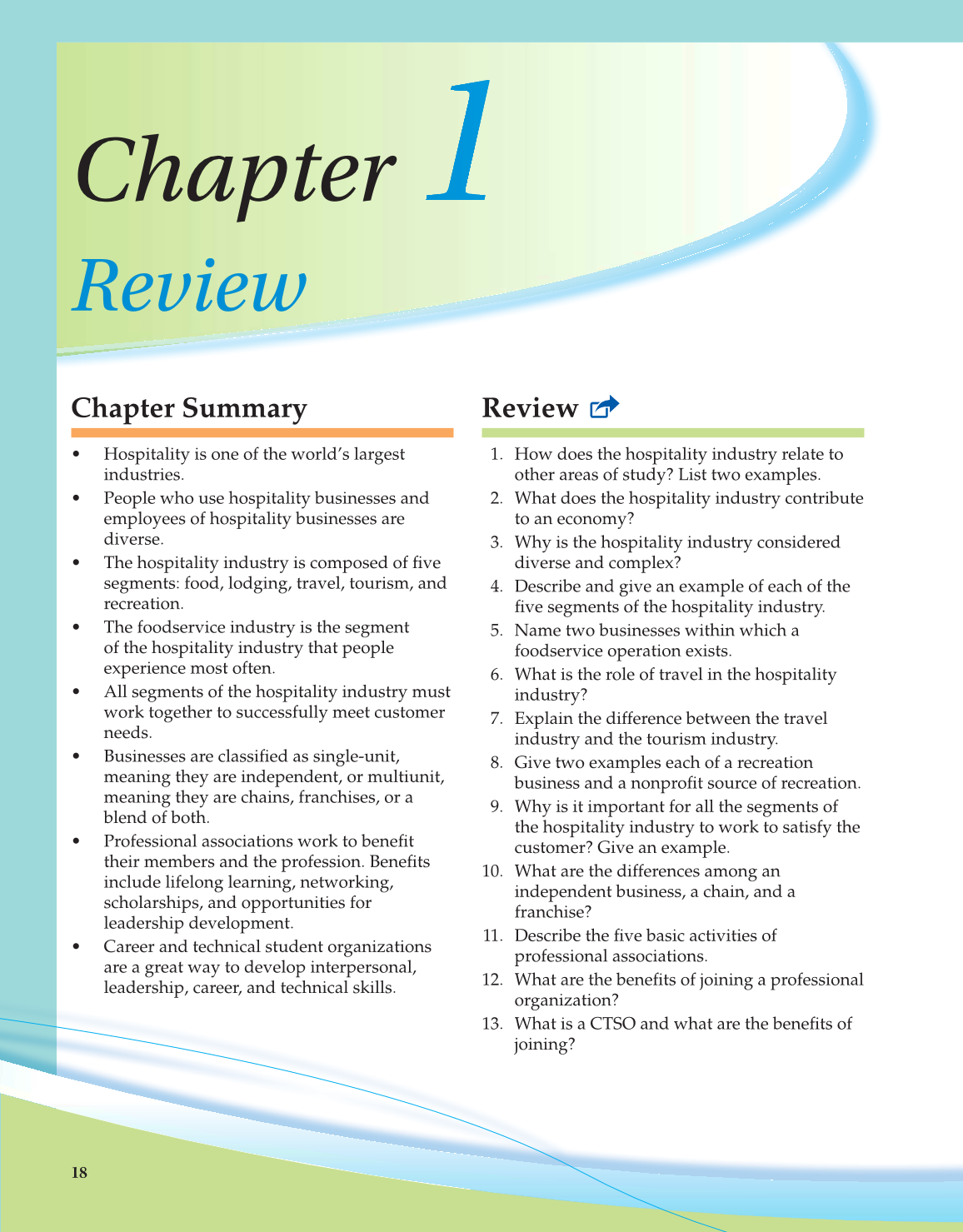Chapter
Review
Chapter Summary
• Hospitality is one of the world’s largest
industries.
• People who use hospitality businesses and
employees of hospitality businesses are
diverse.
• The hospitality industry is composed of fi ve
segments: food, lodging, travel, tourism, and
recreation.
• The foodservice industry is the segment
of the hospitality industry that people
experience most often.
• All segments of the hospitality industry must
work together to successfully meet customer
needs.
• Businesses are classifi ed as single-unit,
meaning they are independent, or multiunit,
meaning they are chains, franchises, or a
blend of both.
• Professional associations work to benefi t
their members and the profession. Benefi ts
include lifelong learning, networking,
scholarships, and opportunities for
leadership development.
• Career and technical student organizations
are a great way to develop interpersonal,
leadership, career, and technical skills.
Review
1. How does the hospitality industry relate to
other areas of study? List two examples.
2. What does the hospitality industry contribute
to an economy?
3. Why is the hospitality industry considered
diverse and complex?
4. Describe and give an example of each of the
fi ve segments of the hospitality industry.
5. Name two businesses within which a
foodservice operation exists.
6. What is the role of travel in the hospitality
industry?
7. Explain the difference between the travel
industry and the tourism industry.
8. Give two examples each of a recreation
business and a nonprofi t source of recreation.
9. Why is it important for all the segments of
the hospitality industry to work to satisfy the
customer? Give an example.
10. What are the differences among an
independent business, a chain, and a
franchise?
11. Describe the fi ve basic activities of
professional associations.
12. What are the benefi ts of joining a professional
organization?
13. What is a CTSO and what are the benefi ts of
joining?
18
